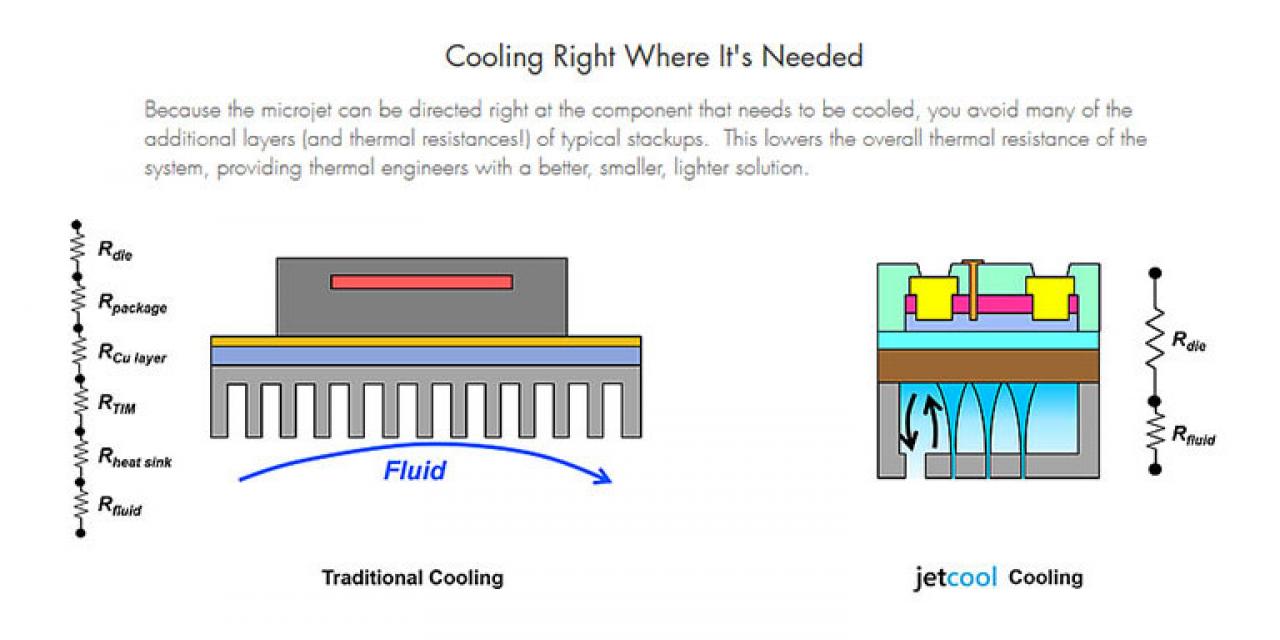
If you consider yourself a PC hardware enthusiast, or just like a very cool and quiet gaming rig, then a new technology from MIT might interest you. It purports to offer a new form of watercooling, specifically for the block's cold plate. The institution is making bold claims too, suggesting that its new JetCool design can cool up to 10 times as effectively, or shrink the size of the cooler down by 10 times.
At face value, such claims seem hard to swallow. But let's dive into the weeds to see if we can figure out how likely it is that this technology will end up watercoolers everywhere in the near future.
JetCool's technology uses microjets to force the liquid through to the CPU at high velocities, leading to greater impact with the chip and therefore better heat transfer. It's also a direct-die cooling solution, that sees the water actually touching the CPU. There's no cold plate between the water and the chip, again improving contact and therefore improving cooling.
All of this means that the coolers can be thinner, more efficient, and provide greater cooling capacity. Jetcool claims heat transfer can be more than 10 times that of microchannel watercooling, and 100 times more efficient than typical cold plates.
JetCool doesn't think that its die-level cooling solution would be ideal for enthusiasts, suggesting instead that it might make sense for larger boards, like monoblock solutions. The others, it claims, will be better suited for system integrators, OEMs, and datacenters.
We'll have to wait and see if this technology becomes viable for a wider array of consumer options, but as Hexus highlights, if you want to download a simulation to see what effect this JetCool tech could have on your system, JetCool does have some files you can grab to try it out.








